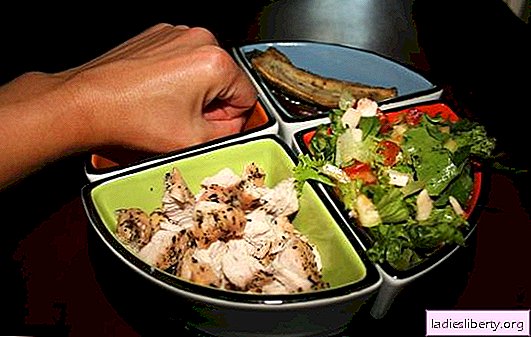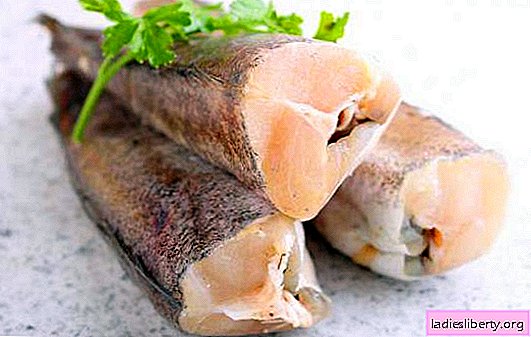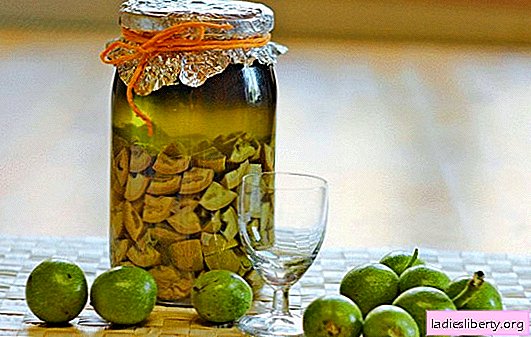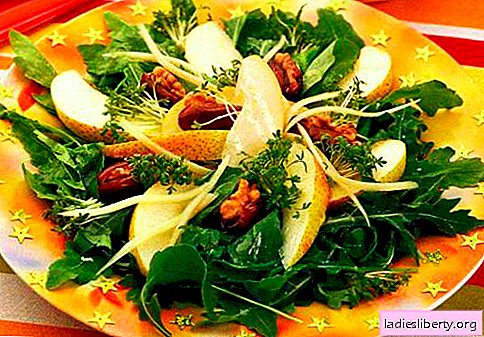
Fractional feeding is a special system in which the daily rate of food consumption is divided into small portions. Diet involves five to six meals in small portions. According to nutritionists, diet: split meals - the best way to lose weight.
The main task of the diet - the gradual reduction of calories and servings in the diet without harm and stress to the body. Fractional nutrition allows you to curb appetite and burn excess fat by reducing daily calorie intake.
General principles of nutrition on a fractional diet
The principle of the diet: split meals, it is to reduce the production of hormones that stimulate the appetite. The fact is that the longer the interval between meals, the more these hormones accumulate, which means that the appetite becomes stronger. This causes overeating, as a starved body requires more calories than a full one. Frequent meals do not allow these hormones to be produced, and you do not eat more food than is necessary.
Adhering to a diet: fractional nutrition, you can control not only the amount of food eaten, but also the quality of the diet.
To improve the body, you must follow the rules of fractional nutrition. This will achieve results in the shortest possible time. Diet: fractional nutrition is primarily dishes that contain all the necessary vitamins and trace elements for the normal functioning of body systems.
1. The main rule of the diet: split meals - eating every two to three hours, but not less than 5-6 times a day.
2. Serving size should be small. The full portion should fit into a glass. That is, one meal is 200-250 grams.
3. Despite the fact that there are no restrictions on the choice of products, however, the caloric content of the daily diet should not exceed the norm. For example, for women the daily rate of calories is 1600.
4. It is necessary to comply with the water regime. On the day, drink at least one and a half liters of plain water.
5. In three meals, a hot meal is necessarily present, and only two times you can get along with a snack. Sweet can be consumed in small quantities once a day, and only in the morning.
6. For snacks, use the "right" food, which suppresses the feeling of hunger. These can be fruits, nuts, vegetables, dried fruits, eggs, cheese, etc.
7. Breakfast includes complex carbohydrates (for example, porridge). Have breakfast within an hour after you wake up.
8. Excludes fasting. Fasting more than three hours is not recommended.
9. Stick strictly to the meal schedule, do not skip breakfast and snacks.
10. The diet should be varied. This will refrain from the temptation to eat a lot of tasty, but not very healthy food.
11. In the afternoon, protein foods are added to the diet.
12. Limit, or completely eliminate the use of sweets, fatty foods, convenience foods, canned goods, smoked foods and other, not very healthy products.
13. Diet menu: split meals consists of healthy fats, carbohydrates and proteins. Be sure to have a vegetable, thermally uncooked food, as well as cottage cheese, kefir and dried fruits.
14. Chew each piece of food slowly and thoroughly. It stimulates rapid saturation and prevents the possibility of overeating.
15. A banana or an apple is a complete snack. Do not eat every time to failure, you have to get up from the table with a slight feeling of hunger. Only in this case, the diet: fractional food will benefit.
16. Hot or cold soups, main dishes or vegetable salads are perfect for lunch. A great meal for lunch is baked or steamed vegetables.
17. It is very important to comply with the regime of meals, even if you are not hungry.
Products - substitutes for prohibited
Despite the fact that this diet does not imply special prohibitions, there are still products whose use is not recommended.
Sweets can be replaced with dried fruits, fruits or low-calorie desserts. It can be fruit and fruit jelly or biscuit gum.
Of sausages, you can sometimes use in small quantities doctor sausage.
Mayonnaise and purchased sauces can be replaced with sour cream or sauces based on greens, kefir or yogurt.
Fried foods replace boiled or steamed.
Sample menu for the week: emergency version
Monday
Breakfast: a glass of milk fat content of 0.5%, 30 g of cornflakes and an apple.
Snack: half a cup of natural yogurt, orange and sweetened tea.
Lunch: buckwheat porridge - 120 g, steamed chicken cutlets - a portion, a salad of fresh vegetables, seasoned with olive oil, 250 ml of kefir with 1% fat.
Snack: 30 g of cheese with a fat content of not more than 17%, a tomato, a slice of whole-grain bread, pear and tea.
Dinner: a portion of sorrel soup on yogurt, two slices of bread, half a plate of vegetables, a glass of fresh water.
Bedtime: tomato, cucumber and 250 ml of kefir.
Tuesday
Breakfast: whole grain cereal with berries, 250 ml of milk with a fat content of 0.5% and pear.
Snack: 30 grams of cheese, half a cup of low-fat yogurt, oatmeal cookies - 2 pcs., Coffee or tea.
Lunch: chicken breast with spicy sauce and mashed potatoes and carrots - per serving, half a dozen fresh vegetables, 30 g of bran bread, 250 ml of 1% kefir.
Lunch: orange, 100 g of low-fat cottage cheese, coffee.
Dinner: vegetable salad with cheese, seasoned with lemon juice and olive oil, two slices of whole grain bread and tea.
At bedtime: bran bread - 30 g, cucumber, fresh tomato, 100 g of 1% cottage cheese and a glass of fresh water.
Wednesday
Breakfast: pancakes with berries and low-fat sour cream, slightly sweetened tea.
Snack: orange and half a cup of natural yogurt
Lunch: two boiled small potatoes, a portion of meatballs with gravy and fresh vegetables - polterelki.
Snack: 30 g of bran bread and lean ham, sweetened coffee.
Dinner: slices of tomatoes and peppers, green salad leaves, 60 grams of whole-grain bread, cold soup with cucumbers - a portion, two slices of cheese.
At bedtime: 250 ml 0.5% milk, apple.
Thursday
Breakfast: milk oatmeal with berries and lightly sweetened coffee.
Snack: slices of sweet pepper, slices of tomatoes and green salad leaves with 60 g of bran bread, lightly sweetened tea.
Lunch: 125 g of boiled rice, fish baked with cheese - a portion, half a plate of fresh vegetables and 250 ml of 1% kefir.
Lunch: fruit salad - a portion and low-fat cottage cheese, slightly sweetened tea.
Dinner: warm vegetable salad with cereal - a portion, 30 g of whole-grain bread, a portion of 10% sour cream with berries, slightly sweetened tea.
At bedtime: 250 ml of 1% kefir.
Friday
Breakfast: an orange, a slice of bran bread, a boiled egg and slightly sweetened coffee.
Snack: 125 ml of natural yogurt, oatmeal cookies - 2 pcs., 30 g of cheese and sweetened tea.
Lunch: vegetable lasagna - a portion, an apple and a glass of fresh water.
Lunch: raspberry ice cream and tea.
Dinner: a slice of lean ham - a portion, vegetable salad, seasoned with olive oil, a glass of sangria and clean, fresh water.
At bedtime: pear, 250 ml1% kefir.
Saturday Sunday
Breakfast: 250 ml of lemon yoghurt and sweetened coffee.
Snack: half a cup of natural yogurt, any fruit and tea.
Lunch: steamed fish with spinach - a portion, fresh vegetables - half-bread, 30 g of rye bread and sweetened tea.
Lunch: half a cup of natural yogurt with a glass of strawberries.
Dinner: 30 grams of bran bread, Caesar salad - a portion, coffee or tea.
At bedtime: a portion of fresh berries and light muffins, lightly sweetened tea.
Daily menu for those who have been on a diet for a long time: split meals
7 o'clock - porridge from oatmeal, buckwheat, millet or corn grits, you can muesli without sugar (200 g). A bit of cheese and a glass of natural juice.
9 hours - Fresh vegetables, for example, celery salad with carrots. Green or black tea without sugar.
11 o'clock - banana or a handful of dried fruit.
13 hours - A plate of any hot soup with a portion (130 g) of lean meat. A full meal should be 250 g.
15 hours - hard-boiled egg and vegetable salad, seasoned with any vegetable oil.
17 hours - 1% cottage cheese with sour cream.
19 hours - A portion of fish, steamed or baked, vegetable salad.
21 hours - 250 ml of kefir or natural yogurt.
How to go on a diet: split meals
1. Start with a gradual reduction in the volume of servings, while the number of meals, leave unchanged.
2. Continue to reduce portions and gradually increase meals up to five times a day.
3. A few days later, when you get used to the fractional diet, you can start replacing harmful products with useful ones.
4. Take food from small dishes. So, you will quickly begin to fill up with a small amount of food.
Important points of fractional power
Diets: split meals need to adhere to at least a month so that it becomes the norm for you. If you deviate from the diet for at least one day, you have to start from the beginning.
Menus are made in such a way that you do not feel hungry. You should form a habit, do snacks between main meals. Fruits and vegetables are best for this. At the same time in the morning - fruits, in the second - vegetables.
Be sure to comply with the water regime. You should drink water at the rate of: 30 ml per kilogram of body weight. Drink water in 20 minutes. before, and after an hour and a half after meals.
Breakfast should consist of healthy carbohydrates. Sweet fresh fruits and whole cereal cereals are ideal.
It is desirable that the soups and porridges were hot.
For lunch it is better to eat foods rich in protein with vegetables, except potatoes.
The last meal should be no later than four hours before bedtime.
After leaving the diet, the portions do not increase and prevent overeating.
Nutritionists consider diet: split meals - the best method to lose those extra pounds. It does not mean hunger strike and overeating, therefore, it is easy to adhere to it not only physically, but also psychologically.
Lose weight with pleasure!











